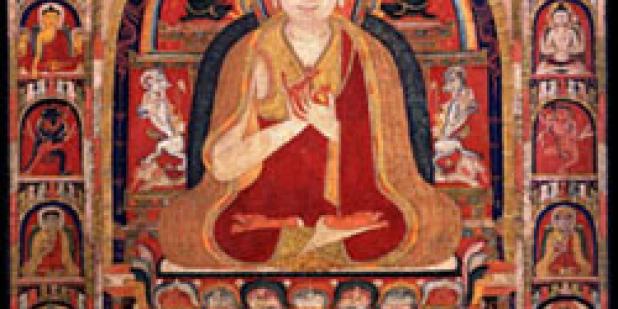Happy Lunar New Year from the USC US-China Institute!
Analyzing Lineages in Early Tibetan Paintings: Taklung Portraits as a Test Case
UC Berkeley's Center for Chinese Studies presents a talk by David Jackson on new possibilities of dating in Tibetan art though analysis of guru lineages.
Where

2nd Annual Khyentse Foundation Lecture in Tibetan Buddhism
Though the analysis of guru lineages has opened up new possibilities of dating in Tibetan art, how useful is this tool in practice? As a test case Professor Jackson will apply the approach to a number of early Tibetan paintings from the so-called 'Taklung' corpus, mainly portraits of founding masters of the Taklung Kagyü tradition. That tradition was one of the most influential branches of the Dakpo Kagyü during the late twelfth and thirteenth centuries; its main seat, Taklung, was founded in 1185 by Taklung Thangpa Tashi Pal (1142-1210), a chief disciple of Phagmotrupa (Phag mo gru pa,1110-1170). At its branch of Riwoche in Kham province a large cache of early and later Pala-style thangkas survived the cultural revolution and were in recent years dispersed outside Tibet. Jackson will also investigate, if time permits, a few portraits from the related Kagyu traditions. He will begin by ordering each group chronologically following structural criteria, according to the number of generations of gurus before the generation of the patron. (In most cases the speaker has worked from photographs; he could not directly consult the painting or use the inscriptions.) Here observable structure and iconography will guide a preliminary analysis, and inscriptions will need to be taken into account later. He will also systematically chart the structure of each painting by giving a complete diagram. This may seem troublesome at first, but it has great advantages, compelling us to deal with unusual features that might otherwise be overlooked.
Background reading (articles by D. Jackson): "Lineages and Structure in Tibetan Buddhist Painting: Principles and Practice of an Ancient Sacred Choreography," Journal of the International Association of Tibetan Studies, Vol. 1, No. 1 (October 2005). http://www.thdl.org?id=T1220. "The Dating of Tibetan Paintings is Perfectly Possible — Though Not Always Perfectly Exact." In I. Kreide-Damani, ed. 2003, Dating Tibetan Art: Essays on the Possibilities and Impossibilities of Chronology from the Lempertz Symposium, Cologne. Contributions to Tibetan Studies 3 (Wiesbaden, Dr. Ludwig Reicher Verlag), pp. 91-112.
David Jackson did his doctorate at the University of Washington's department of Asian Languages and Literature in 1985. In 2007, after fourteen years teaching at Hamburg University, he began working as curator for the Rubin Museum of Art.
Featured Articles
We note the passing of many prominent individuals who played some role in U.S.-China affairs, whether in politics, economics or in helping people in one place understand the other.
Events
Ying Zhu looks at new developments for Chinese and global streaming services.
David Zweig examines China's talent recruitment efforts, particularly towards those scientists and engineers who left China for further study. U.S. universities, labs and companies have long brought in talent from China. Are such people still welcome?






